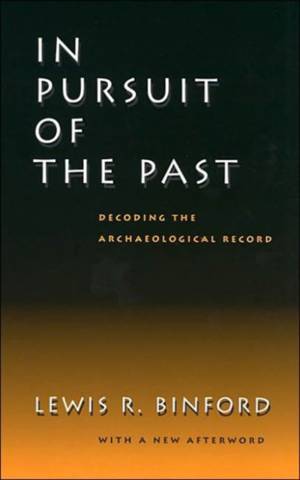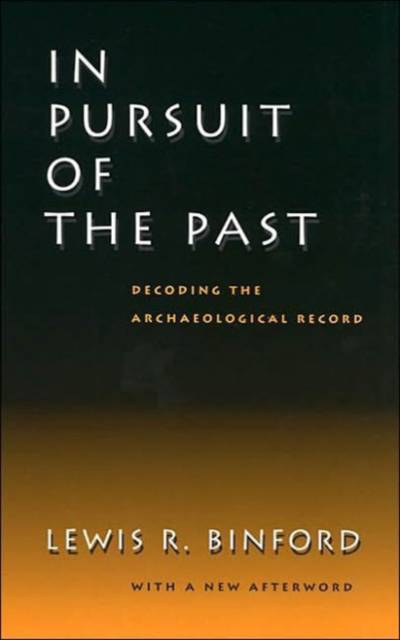
Door een staking bij bpost kan je online bestelling op dit moment iets langer onderweg zijn dan voorzien. Dringend iets nodig? Onze winkels ontvangen jou met open armen!
- Afhalen na 1 uur in een winkel met voorraad
- Gratis thuislevering in België vanaf € 30
- Ruim aanbod met 7 miljoen producten
Door een staking bij bpost kan je online bestelling op dit moment iets langer onderweg zijn dan voorzien. Dringend iets nodig? Onze winkels ontvangen jou met open armen!
- Afhalen na 1 uur in een winkel met voorraad
- Gratis thuislevering in België vanaf € 30
- Ruim aanbod met 7 miljoen producten
Zoeken
€ 41,95
+ 83 punten
Omschrijving
Many consider Lewis Binford to be the single most influential figure in archaeology in the last half-century. His contributions to the "New Archaeology" changed the course of the field as he argued for the development of a scientifically rigorous framework to guide the excavation and interpretation of the archaeological record. In this book, first published nearly two decades ago, Binford provided students and general readers with an introduction to his challenging and provocative ideas about understanding the human past. Now available again, this important component of Binford's intellectual legacy will convey the drama and intellectual excitement of contemporary archaeology to a new generation of archaeologists and others interested in the field. Throughout the book, Binford questions old ideas and proposes new theories based on his comparative archaeological and ethnographic research in North America, Europe, South Africa, and Australia. A new afterword by Binford surveys the direction archaeology has taken since the publication of this book and shares his hopes for the future of the discipline.
Specificaties
Betrokkenen
- Auteur(s):
- Uitgeverij:
Inhoud
- Aantal bladzijden:
- 260
- Taal:
- Engels
Eigenschappen
- Productcode (EAN):
- 9780520233393
- Verschijningsdatum:
- 17/04/2002
- Uitvoering:
- Paperback
- Formaat:
- Trade paperback (VS)
- Afmetingen:
- 168 mm x 241 mm
- Gewicht:
- 426 g

Alleen bij Standaard Boekhandel
+ 83 punten op je klantenkaart van Standaard Boekhandel
Beoordelingen
We publiceren alleen reviews die voldoen aan de voorwaarden voor reviews. Bekijk onze voorwaarden voor reviews.











